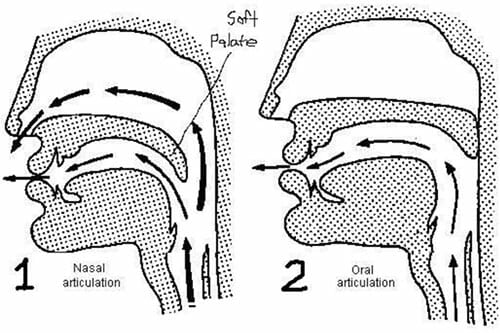
How To Sing Better Guys
Have you ever wondered how to enhance your singing voice and become a more skilled vocalist? Look no further! In this article, we will share a few simple yet effective tips on how to improve your singing.
Whether you’re an aspiring musician, a karaoke enthusiast, or love belting out your favorite tunes in the shower, these techniques will help you enhance your vocal abilities and bring out the best in your singing voice. Get ready to take your singing skills to the next level and impress everyone with your captivating performances!

Breathing Techniques
Diaphragmatic Breathing
Diaphragmatic breathing is a foundational technique that can significantly improve your singing ability. To practice this technique, find a comfortable position and place one hand on your chest and the other on your belly. Take a deep breath in, allowing your belly to expand and rise while keeping your chest relatively still. As you exhale, gently push the air out, feeling your belly fall. This type of deep breathing enables better control of your breath, allowing you to sing with more power and consistency.
Lung Capacity Exercises
Having a strong lung capacity is essential for singers. One effective exercise to increase lung capacity is the “siren” exercise. Start by taking a deep breath and then gradually exhale while vocalizing a long, continuous “siren” sound, gliding smoothly from your lowest comfortable pitch to your highest comfortable pitch. This exercise helps to expand your lung capacity and improve your ability to sustain long notes.
Controlled Exhalation
Controlled exhalation is an essential technique for maintaining consistent airflow while singing. To practice this, take a deep breath and then gently release the air in a controlled manner, using steady and even breath support. Imagine you are slowly exhaling through a straw to create a focused stream of air. This technique helps to avoid breathiness and allows for more precision and control when shaping your vocal phrases.
Warm-up and Vocal Exercises
Lip Trills
Lip trills are a simple and effective warm-up exercise that helps to relax and mobilize your facial muscles and vocal cords. To do lip trills, lightly press your lips together and blow air through them, causing your lips to vibrate. Start with a gentle hum and gradually increase the pitch while maintaining the vibrational sensation in your lips. This exercise warms up your vocal cords and prepares them for more demanding singing.
Humming
Humming is another effective warm-up exercise that helps to relax your vocal cords and improve resonance. Hum a comfortable note and focus on feeling the vibrations in your nasal and facial areas. Explore different pitches while maintaining a relaxed and consistent hum. This exercise helps to warm up and open up your vocal tract, enabling you to produce a more resonant and focused sound.
Sirens
Sirens are a fun and beneficial vocal exercise that helps to develop your vocal range and flexibility. Start by vocalizing a low note and smoothly slide up to a high note, maintaining a smooth and even vocal transition. Then, reverse the process by starting with a low note and sliding up to a high note. As you practice sirens, pay attention to the gradual increase and decrease of your vocal intensity, aiming for a seamless and controlled vocal glide.
Yawn-Sigh
The yawn-sigh exercise is a great way to release tension in your throat and jaw, as well as to improve your breath control. Begin by taking a deep breath and silently mimic a yawn, feeling the back of your throat and the muscles around your mouth and jaw relax. Then, exhale on a soft “ahh” sound, allowing the sound to flow effortlessly. This exercise helps to open up your throat and enhance the quality and ease of your singing.
Tongue Trills
Tongue trills are an effective exercise for warming up your articulatory muscles and improving your diction and clarity. To do tongue trills, lightly press the tip of your tongue against the roof of your mouth, just behind your front teeth. Start a gentle hum, allowing the vibrations from the trill to travel through your tongue and into your voice. Experiment with different pitches and explore the sounds produced by your trilled tongue. This exercise helps to promote tongue agility and improve your overall vocal control and precision.

Posture and Body Alignment
Standing Tall
Maintaining good posture while singing is crucial for optimal breath support and vocal projection. Stand tall with your feet shoulder-width apart and imagine a gentle string pulling you upward from the top of your head. Keep your shoulders relaxed, your spine lengthened, and your chest lifted. Standing tall helps create an open and unrestricted pathway for your breath, allowing for better vocal resonance and projection.
Relaxed Shoulders
Tension in your shoulder muscles can interfere with your breath support and restrict vocal freedom. To achieve relaxed shoulders, consciously release any tension by gently rolling your shoulders back and down. Imagine your shoulder blades gently sliding down your back, creating a sense of openness and relaxation. Relaxed shoulders allow for a more natural and unrestricted breathing pattern, helping to reduce muscle strain and fatigue.
Neutral Spine
Maintaining a neutral spine position is essential for good vocal technique. Align your spine by imagining a straight line connecting your ears, shoulders, hips, and ankles. Avoid arching your back excessively or slumping forward. A neutral spine helps to ensure proper breath support and alignment, allowing for optimal vocal production and reducing the risk of strain or injury.
Engaged Core
Engaging your core muscles while singing provides stability and support for breath control. Imagine gently pulling your abdominal muscles inward towards your spine without holding your breath. This engagement helps create a stable foundation for your breath, allowing for better control and efficiency in your singing. A strong core also contributes to better body control and overall vocal performance.
Loose Jaw
Tension in your jaw can affect your ability to produce clear and resonant sounds. Keep your jaw relaxed by allowing it to hang freely, slightly apart, without clenching or gritting your teeth. Gently massage your jaw muscles with your fingertips to release any tension. A loose jaw promotes better vocal resonance and articulation, allowing for a more relaxed and expressive singing experience.
Vocal Health and Hygiene
Stay Hydrated
Keeping your voice well-hydrated is crucial for maintaining vocal health and optimal performance. Drink plenty of water throughout the day to ensure your vocal cords stay lubricated and flexible. Avoid excessive caffeine and alcohol consumption, as they can dehydrate your vocal cords. Hydrating your body and voice helps prevent vocal strain and fatigue, promoting a clear and vibrant tone.
Avoid Vocal Strain
Vocal strain can occur when you push your voice beyond its limits or use improper singing techniques. To avoid vocal strain, it is essential to warm up properly before singing and to be aware of and respect your vocal limits. Pay attention to any signs of vocal fatigue or discomfort and take breaks when needed. Using good breath support, vocal projection techniques, and proper vocal warm-ups can also help prevent vocal strain and injury.
Proper Diet and Nutrition
Maintaining a healthy diet and nutrition plan is beneficial for your overall vocal health and performance. Ensure you eat a balanced diet rich in fruits, vegetables, and lean proteins to provide the necessary nutrients for your vocal cords and muscles. Avoid excessive consumption of foods that can cause acid reflux or excessive mucus production, such as spicy or fatty foods. A well-nourished body supports vocal stamina and resilience.
Limit Alcohol and Caffeine
Alcohol and caffeine can hurt your voice and vocal performance. Both substances can cause vocal cord dehydration and lead to vocal strain. Limit your consumption of alcoholic beverages and caffeinated drinks, such as coffee and soda, especially before singing or performing. Opt for healthier alternatives, such as herbal teas or water, to keep your vocal cords hydrated and in optimal condition.
Avoid Smoking
Smoking is highly detrimental to your vocal health and can cause long-term damage to your voice. The chemicals in tobacco smoke can irritate and inflame your vocal cords, leading to decreased vocal range, hoarseness, and other vocal problems. If you smoke, consider quitting or seeking professional help to overcome this harmful habit. A smoke-free lifestyle greatly improves your vocal health and helps you reach your full singing potential.

Pitch and Tone Control
Ear Training
Ear training is a vital skill for singers aiming to improve their pitch control and accuracy. Practice ear training exercises that help you recognize and reproduce specific pitches, intervals, and melodies. Start with simple exercises, such as singing along with a piano or keyboard, matching pitches as closely as possible. Gradually increase the difficulty by singing scales, arpeggios, and melodic patterns. Developing your ear allows for better pitch control and overall musicality in your singing.
Vocal Range Exercises
Expanding and maintaining a broad vocal range is essential for a versatile and expressive singing voice. Engage in vocal range exercises that gradually explore both your lower and upper registers. Start by singing comfortably within your range and then progressively challenge yourself by reaching slightly higher or lower notes. Focus on maintaining a balanced, well-supported tone throughout your range. Consistent practice of vocal range exercises helps you develop and expand the capabilities of your voice.
Pitch Slides
Pitch slides, also known as glissandos, are an effective exercise for improving pitch control and physical coordination. Start by humming a comfortable pitch and gradually glide up or down through your vocal range, smoothly and evenly transitioning from one pitch to another. Concentrate on maintaining a steady breath flow and consistent vocal support as you navigate the pitch slide. This exercise helps to train your vocal muscles to move between pitches and develop better pitch control accurately.
Vowel Modification
Vowel modification refers to making slight adjustments to vowel sounds to improve resonance and tone quality. Experiment with different vowel shapes and placements to find the optimal positions for each specific note or phrase in a song. For example, on higher notes, slightly modify vowels to a more “forward” or “bright” position to enhance resonance and projection. This technique enables greater flexibility and control over your vocal tone, allowing you to achieve a well-rounded and cohesive sound.
Resonance Control
Resonance control involves utilizing specific resonating spaces within your vocal tract to enhance the quality and projection of your voice. Practice resonance exercises that focus on creating a balanced resonance, such as “ng” or “n” sounds. Experiment with different vowel placements and imagine the sound resonating in various areas, such as the front of your face or the back of your throat. Developing resonance control helps you achieve a fuller, more resonant sound and better vocal projection.
Articulation and Diction
Tongue Twisters
Tongue twisters are a fun and effective way to improve your articulation and diction skills. Practice tongue twisters that focus on specific sounds, syllables, or consonant clusters that challenge your coordination and precision. Start slowly and gradually increase your speed while maintaining clarity and accuracy. Tongue twisters help to strengthen the muscles responsible for articulation and train your tongue to move with agility and precision.
Lip Exercises
Lip exercises are beneficial for improving your articulation and vowel clarity. Practice lip exercises that involve forming and sustaining different vowel shapes while maintaining a relaxed and open mouth position. For example, exaggerate and sustain the “ooh” and “ee” vowel sounds while ensuring your lips are rounded or spread accordingly. Lip exercises help you develop dexterity and control over your lip muscles, resulting in more transparent and more intelligible singing.
Clear Consonants
Clear consonants are essential for delivering lyrics with precision and understanding. Pay attention to the clarity and crispness of your consonant sounds, ensuring they are not muffled or obscured. Practice enunciating consonants more clearly, emphasizing their pronunciation without sacrificing vocal tone. Clear consonants help your words to be understood and add clarity and expression to your singing.
Sibilance Reduction
Sibilance refers to overly harsh or sharp “s” and “sh” sounds that can distract from your singing. Practice sibilance reduction exercises that focus on softening and controlling these sounds. Experiment with adjusting your tongue and airflow to produce a smoother and more controlled “s” and “sh” sound. This technique helps to reduce sibilance and achieve a more pleasant and balanced vocal tone.
Proper Word Stress
Proper word stress involves emphasizing the correct syllables in words and phrases to convey meaning and clarity. Pay attention to the natural stress patterns of words and phrases, ensuring that essential syllables are given appropriate emphasis. Practice singing songs or exercises that challenge your word stress and help you develop a better understanding of the rhythmic and melodic patterns in your singing. Proper word stress enhances the overall intelligibility and expressiveness of your vocal performance.

Emotional Connection and Expression
Lyric Interpretation
Interpreting lyrics is an essential aspect of delivering a compelling and emotionally engaging vocal performance. Dive deep into the meaning and emotion behind the lyrics of a song, and strive to connect with the message and story being conveyed truly. Consider the context, feelings, and experiences that the lyrics evoke, and find ways to express these emotions authentically through your voice. Lyric interpretation helps you create a genuine and impactful connection with your audience.
Body Language
Body language plays a significant role in conveying emotion and connecting with your audience. Explore different physical gestures, movements, and expressions that resonate with the lyrics and mood of a song. Maintain an open and engaged body posture, allowing your movements to complement and enhance your vocal delivery. Effective body language helps to convey authenticity, emotion, and connection, creating a more captivating and immersive performance.
Vocal Dynamics
Vocal dynamics refer to the variation in volume, intensity, and emotion throughout a song. Experiment with different levels of vocal intensity, ranging from soft and intimate to powerful and expressive. Use dynamics to convey the feelings and story of the song, emphasizing specific phrases or words with more volume or intensity. Mastering vocal dynamics adds depth, emotion, and nuance to your singing, captivating and engaging your audience on a deeper level.
Phrasing and Breath Control
Phrasing and breath control are crucial for delivering a smooth and expressive vocal performance. Focus on how you divide your lyrics into smaller musical phrases and how you breathe between phrases. Experiment with different phrasing choices to highlight the natural flow and meaning of the lyrics. Practice breath control exercises that help you sustain and shape your phrases smoothly and effectively. Mastering phrasing and breath control enables better vocal expression and a more enhanced connection with your audience.
Connecting with the Audience
Connecting with your audience is an essential aspect of delivering a memorable and impactful vocal performance. Maintain eye contact with your audience, allowing them to feel seen and included in your performance. Engage with them emotionally by expressing genuine emotion and passion through your voice and body language. Encourage audience participation when appropriate, such as through clapping or sing-alongs. Connecting with your audience fosters a sense of intimacy, enabling a more meaningful and enjoyable experience for everyone involved.
Range Expansion
Vocal Exercises for Extending Range
Expanding your vocal range requires consistent practice and dedication. Engage in exercises specifically designed to stretch and gradually strengthen your voice over time. Start by singing comfortably within your current range, and then attempt to progressively reach slightly higher or lower notes. Focus on maintaining healthy vocal technique and good breath support throughout your exercises. Incrementally challenging your vocal range helps you explore new possibilities and unlock previously inaccessible notes.
Head Voice and Falsetto Training
Developing your head voice and falsetto is essential for achieving a well-rounded vocal range and tonal versatility. Practice exercises that specifically target these vocal registers, gradually exploring and strengthening their capabilities. Start by experimenting with gentle sirens, gradually gliding up into your head voice or falsetto range. Focus on maintaining breath support and proper resonance placement to achieve a controlled and connected sound. Developing your head voice and falsetto adds depth, color, and expressive possibilities to your vocal repertoire.
Chest Voice Strengthening
Your chest voice is fundamental for full-bodied and powerful singing. Engage in exercises that help to strengthen and expand your chest voice capabilities. Start by singing within your comfortable chest voice range and gradually challenge yourself to sing slightly higher or lower notes, maintaining a balanced and supported tone. Focus on proper breath support and resonance placement to achieve a rich and resonant chest voice sound. Strengthening your chest voice enables a greater vocal range and enhanced dynamic control.
Transitioning Between Registers
Smoothly transitioning between vocal registers is a crucial skill for achieving a seamless and connected vocal performance. Practice exercises that target the transitions between your chest voice, head voice, and falsetto registers. Focus on maintaining proper breath support, resonance placement, and vocal coordination as you navigate the vocal bridges between registers. Gradually increase the speed and difficulty of your exercises to improve the fluidity of your register transitions. Mastering register transitions allows for greater vocal control and versatility in your singing.
Mixed Voice Development
Developing your mixed voice allows for better blending and balance between your registers, resulting in a cohesive and versatile vocal sound. Practice exercises that specifically target the coordination and balance of your chest and head voices. Experiment with varying degrees of vocal cord engagement and breath support to achieve a smooth and connected sound between registers. Focus on finding the “sweet spot” where your chest and head voices meet, allowing for a powerful yet controlled vocal quality. Developing your mixed voice enhances your overall vocal range and consistency.

Performance Tips
Confidence Building
Building confidence is key to delivering a strong and impactful vocal performance. Embrace positive self-talk and visualize successful performances to boost your confidence. Practice regularly and seek feedback from trusted mentors or friends to help you build confidence in your abilities. Consider performing in front of small, supportive audiences to overcome performance anxiety gradually. Confidence enables a more relaxed and authentic performance, allowing you to connect with your audience and shine on stage.
Stage Presence
Stage presence refers to your ability to engage and captivate your audience through your physical presence and energy on stage. Experiment with different ways to command the stage, such as using purposeful movements, expressive gestures, and visually engaging facial expressions. Consider how your body language, eye contact, and overall stage presence enhance the message and emotions of your songs. Developing a strong stage presence enables you to connect with your audience and deliver a memorable and compelling performance.
Mic Technique
Proper microphone technique is essential for projecting your voice and ensuring an optimal sound mix. Experiment with microphone positioning to find the most comfortable and practical placement for your voice. Maintain a consistent distance and angle from the microphone to avoid volume fluctuations or distortion. Familiarize yourself with microphone handling techniques, such as preventing plosive sounds (e.g., “p” or “b” sounds) and proper hand positioning. Effective microphone technique enables better vocal control and clearer sound projection.
Overcoming Stage Fright
Stage fright is a common challenge for many singers, but there are strategies to help overcome it. Practice deep breathing exercises and relaxation techniques to calm your nerves before performing. Visualize successful performances and focus on the joy of sharing your music with others. Gradually expose yourself to performing in front of supportive audiences to desensitize yourself to stage fright. Seek professional help if stage fright significantly impacts your ability to perform. Overcoming stage fright allows you to showcase your talent and connect with your audience with confidence and ease.
Rehearsal and Preparation
Proper rehearsal and preparation are crucial for a successful and polished vocal performance. Set aside dedicated time to practice your songs, focusing on technical aspects, musicality, and emotional interpretation. Break down challenging sections and isolate specific vocal techniques for focused practice. Record and review your rehearsals to evaluate and refine your performance. Consider rehearsing with accompaniment or in front of others to simulate performance conditions. Thorough rehearsal and preparation provide the foundation for a confident and polished vocal performance.
Seeking Professional Help
Vocal Coach or Teacher
Working with a vocal coach or teacher can significantly enhance your singing skills and overall vocal development. A vocal coach or teacher can provide personalized guidance, correct any technical issues, and help you develop proper vocal technique. They can also offer performance coaching, repertoire selection, and guidance in various musical styles. Seeking the advice of a professional can accelerate your vocal progress and help you reach your full singing potential.
Voice Lessons
Voice lessons are an excellent way to receive individualized instruction and guidance in your vocal journey. Through voice lessons, you can work on specific vocal techniques, repertoire selection, musical interpretation, and performance skills. Lessons allow for tailored feedback and structured progression that aligns with your goals and aspirations as a singer. Voice lessons provide a supportive and nurturing environment for growth and improvement.
Joining a Choir or Vocal Group
Joining a choir or vocal group offers valuable opportunities to develop your vocal skills in a collaborative setting. Singing in harmony and blending your voice with others helps to enhance your musical ear, vocal control, and overall musicianship. Choirs and vocal groups also offer regular performances, providing valuable real-world experience and opportunities to refine your stage presence and performance skills. Being part of a choir or vocal group fosters teamwork and camaraderie, creating a rewarding and fulfilling vocal experience.
Recording Studio Assistance
Working with professionals in a recording studio can provide valuable insights and guidance for capturing your voice and sound in a studio setting. Recording studio assistance involves collaborating with engineers, producers, and vocal producers to ensure optimal sound quality and performance. Recording studio sessions allow for precise vocal editing, harmonies, and effects that enhance your recordings. Seeking recording studio assistance helps you produce professional-quality recordings and further develop your vocal skills in a studio environment.
Performance and Audition Coaching
Performance and audition coaching can be beneficial for singers seeking to refine their stage presence and prepare for specific performance opportunities or auditions. Coaches offer guidance on song selection, interpretation, stagecraft, and managing performance anxiety. They can critique and fine-tune your stage presence, delivery, and vocal technique to make a lasting impression during auditions or performances. Performance and audition coaching helps you present your best self and showcase your talent with confidence and authenticity.
Improving your singing ability requires a combination of technical skills, vocal health and hygiene, emotional connection, and performance preparation. By incorporating breathing techniques, warm-up exercises, proper posture, vocal health practices, pitch control exercises, diction and articulation exercises, emotional expression, range expansion techniques, performance tips, and seeking professional help when needed, you can enhance your vocal skills and confidently share your talent with the world. With dedicated practice and a positive mindset, you can become a better singer and enjoy the journey of vocal growth and musical expression.
RELATED TOPICS ABOUT How To Sing Better Guys:
Singing Tips for Guys,
How to Sing Better for Men,
Male Vocal Training Tips,
How to Improve Singing Voice for Guys,
How to Sing Well As a Guy,
Vocal Techniques for Male Singers,
How to Sing High Notes for Guys,
Breath Control Exercises for Men,
Deep Voice Singing Tips,
Strengthen Male Vocal Range,
Avoid Voice Cracks for Guys,
Pitch Control for Male Voices,
How to Start Singing Better As a Guy,
Singing Exercises for Male Beginners,
How to Sing with Confidence As a Guy,
Voice Improvement Tips for Guys,
How to Sing in Tune for Men,
Beginner Singing Tips for Guys,
Baritone Vocal Tips,
Tenor Singing Exercises,
Bass Voice Training,
How to Find Your Vocal Range As a Guy,
Male Voice Projection Tips,
Vocal Warm-ups for Male Singers,
Singing Tutorials for Guys,
Youtube Lessons for Male Vocalists,
Best Vocal Apps for Men,
Online Singing Courses for Guys,
Self-taught Singing Guide for Male Voices,
How to Sing Better As a Teenage Boy,
Easy Singing Tips for Guys with Deep Voices,
How to Improve Your Voice Fast for Guys,
How to Sing Pop and Rock Songs for Guys,
Step-by-step Vocal Guide for Male Singers
==========
Content 10/10/G




